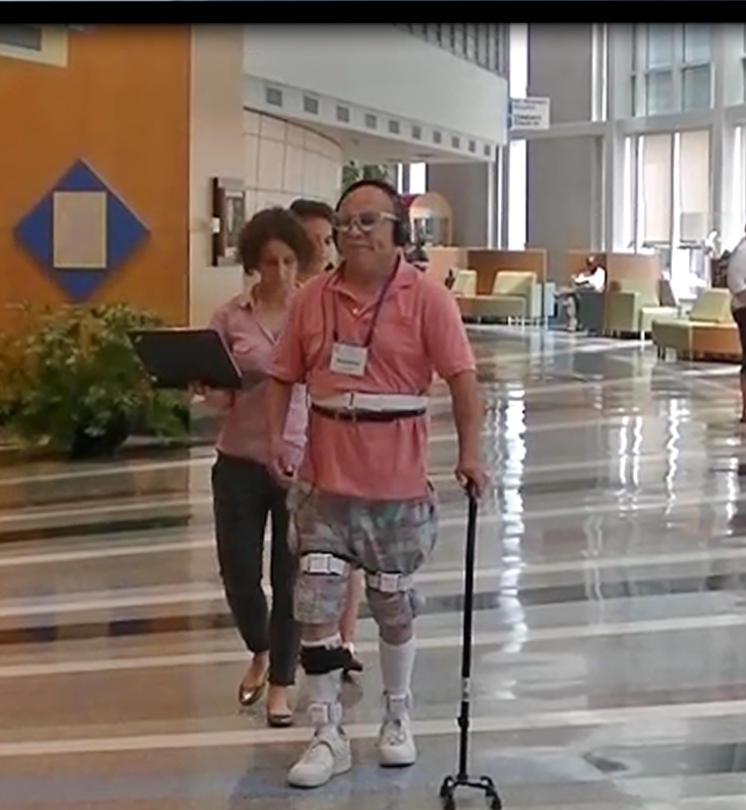Adults with stroke have a diminished ability to walk and simultaneously perform cognitive tasks (referred to as dual-task interference). Dual-task interference is attributed to a reduction in information processing capacity. Without adequate attentional resources for concurrent performance of two tasks, individuals must make a decision about which task to prioritize. Inability to flexibly allocate attention between two concurrent tasks may be an important factor contributing to dual-task interference, with critical implications for safety. This may be especially true in the real world where there are considerably more distractions and threats to stability than in clinical settings. Most studies have examined gait and dual-task performance in the laboratory, and none have studied the ability to flexibly prioritize attention in dual-task situations after stroke. Given that dual-task interference significantly impacts gait in the laboratory, it is imperative to determine if real-world environments exaggerate interference effects on gait and dual-task performance in community-dwelling individuals with stroke. The overall objective of the proposed research is to test the hypotheses that (1) single and dual-task walking in the real world differ from that in the laboratory, (2) ability to flexibly prioritize attention during dual-tasks is impaired post-stroke and this deficit is amplified in the real world, and (3) attention allocation ability is related to both motor and cognitive abilities. Using a repeated measures design, gait and cognitive performance of 20 adults with stroke and 20 age- and gender-matched healthy adults will be assessed in single and 4 different variable-priority dual-task conditions (no-priority, gait-priority, cognitive-priority, equal-priority) in the laboratory and a real-world context (grocery store). The project will employ pioneering advances in wireless technology to examine gait outside the research laboratory, in the real world. The long term goal of this research is to develop effective interventions to improve dual-task walking and minimize locomotor disability after stroke. This innovative 2-year project is expected to uncover information about the effect of environment and attention allocation ability on dual-task performance after stroke. This knowledge is critical to the development of interventions to improve attention allocation and task prioritization during dual-tasks in complex, real world environments among community-dwelling adults with stroke.

Contact Person
Prue Plummer
Investigators and Key Personnel
Prue Plummer, Carol Giuliani, Angela Lipscomb-Hudson
Primary Funding Source
Administration for Children, Youth and Families
